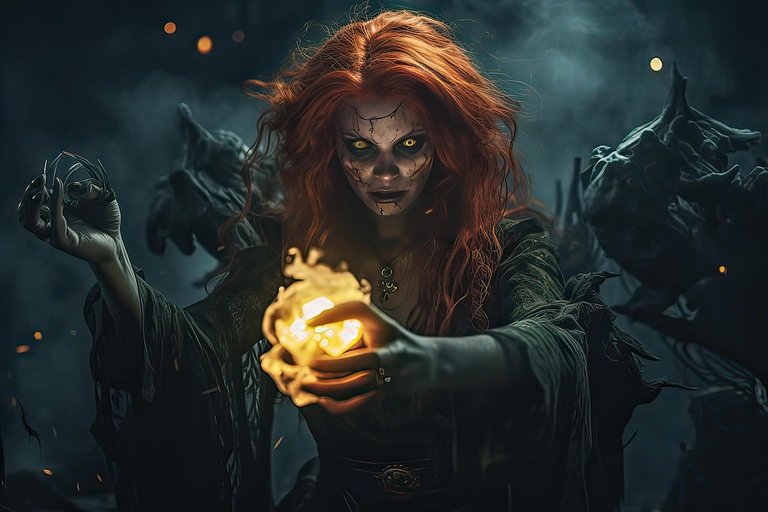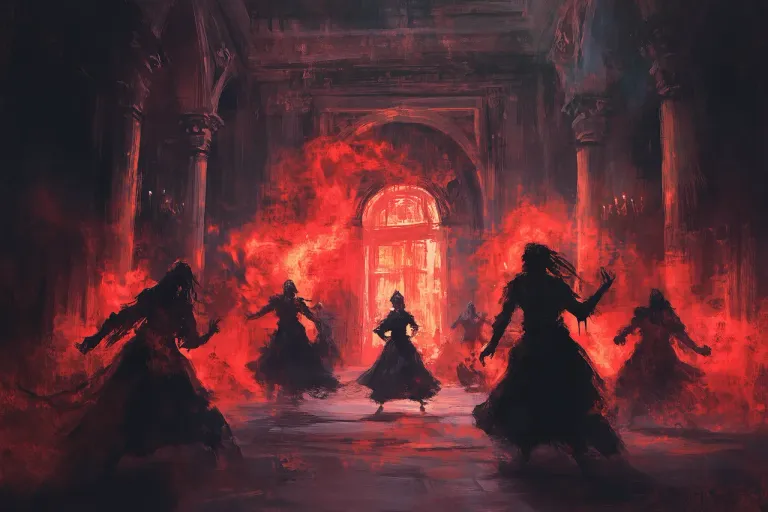Homunculi: Did the “Little Men” of Ancient Alchemy Exist?

A Whisper from the Crucible
In the shadowed corners of ancient laboratories, behind doors sealed with symbols and prayers, the alchemists of old chased more than gold. They pursued secrets whispered only in dreams—visions of power, eternal life, and the divine spark itself. Among the most disturbing and mystifying of their alleged creations was the homunculus—a miniature human said to be born not of womb, but of arcane science.
Did these “little men” ever walk the world, hidden from common eyes? Or were they metaphors for deeper truths—lost pieces of the soul, fragments of consciousness, or reflections of man’s attempt to become as gods?
To trace the origins of the homunculus is to dive headfirst into the dark river of medieval magic, forbidden knowledge, and the very essence of life itself.
Seeds of the Secret
The word homunculus stems from Latin, meaning "little man." But the idea itself stretches far beyond the Latin tongue.
It was in 16th-century alchemical texts that the homunculus took shape, most notoriously in the writings of Paracelsus, the Swiss physician and alchemist. In his treatise De Natura Rerum (1537), Paracelsus boldly claimed that it was possible to create a tiny human through artificial means. The recipe? A mixture of human sperm, rotting matter, and horse dung, sealed in a flask and incubated for forty days.
Afterward, the creature would emerge—humanoid in form, alive, but miniature. It could grow. It could be taught. In some texts, it could even possess supernatural powers, assisting its creator with insight and protection. Paracelsus insisted this was not a metaphor. He was describing something real—something sacred. Something feared.
More Than a Myth?
It’s easy to dismiss these writings as the fantastical musings of a time before science, before cells and DNA. But the idea of artificially creating life—of building a conscious being without natural birth—is older still.
Ancient Egyptian scrolls speak of Thoth crafting life through words. The Greeks told of Prometheus, shaping man from clay. Jewish mysticism gave us the Golem, animated from mud and divine letters. Across cultures, the idea appears again and again: that life can be conjured, not born.
In secret societies and occult traditions, stories persist of hidden homunculi kept in glass jars, fed with drops of blood, used by their masters as messengers, watchers, or even assassins. Some were said to have no mouths, no voice, but immense telepathic ability. Others were deformed, their tiny bodies twitching with unnatural motion, eyes too aware for their size.
The myth ends and history begins remains unclear.
The Alchemical Lens
The homunculus also carried symbolic weight. In alchemical diagrams, it sometimes represented the spiritual embryo, the soul being reborn through transformation. The process of its creation echoed the Magnum Opus, the Great Work: blackening, whitening, yellowing, and reddening—the four stages of spiritual purification.
To create a homunculus, then, was not just a physical act. It was a mirror of the alchemist's rebirth. A mystical microcosm. The divine in miniature.
Yet many alchemists treated it as more than just a symbol. Manuscripts like the Book of the Cow (a strange and cryptic text translated into Arabic and Latin) describe bizarre experiments, where organs of animals, blood, and celestial alignments were used to incubate strange lifeforms. In some cases, these artificial beings were said to carry knowledge from beyond—beings capable of bridging the seen and unseen, part matter, part spirit.
Echoes in the Modern Age
The idea of the homunculus never truly died. It only changed shape.
In the 17th century, preformationism—the belief that a fully formed miniature human lived inside every sperm—took root. Though discredited by modern biology, the echoes of the homunculus idea persisted. Even today, science fiction is filled with stories of cloned humans, genetically engineered soldiers, or synthetic consciousness.
And on the darker fringes of the occult world, modern practitioners still claim to summon—or grow—homunculi. Grainy videos circulate online showing jars with writhing forms inside, soaked in strange fluids. Are they hoaxes? Mutated animals? Or something else?
Some believe the homunculus is not made through physical ritual, but through psychic force—a thoughtform, a tulpa, given life through focus and belief. Created in the mind, yet capable of independent action.
The Alchemist’s Warning
If homunculi did, or do, exist—what then?
Paracelsus warned that such creations were dangerous. To make life is to play god, and the results may not always be obedient. In later legends, homunculi turn on their masters or escape into the night. Some are said to live still, hiding in plain sight. Tiny, unnoticed. Watching.
Perhaps the homunculus is not just a creature, but a question. What is life? What is the soul? Can the essence of a human be distilled, replicated, or summoned?
And more disturbingly—should it be?
The Little Man in the Mirror
The homunculus lives on—not only in books and legends, but in our collective psyche. It is the symbol of our desire to create, to control, to touch the divine spark. It reminds us of the thin line between the sacred and the profane, between genius and madness.
In a world now flirting with artificial intelligence and synthetic biology, the homunculus feels less like a relic and more like a warning. It is not just a “little man” in a flask—it is a reflection of us, and of what we might become.
And in some quiet lab, beneath flickering light and humming machines, perhaps the alchemist’s old dream still stirs—waiting to awaken.
Posted by Waivio guest: @waivio_cosmicsecrets
